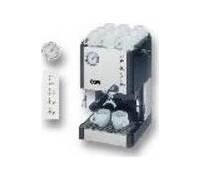

An increased torque basically means that it requires more “muscle” to turn a motor. This higher pressure increases the torque on the motor. Resistance to air flow can also be caused by a clogged filter or dirty coil, which will also increase static pressure. Higher cooling demand increases condensation on the evaporator coil, reducing air flow (hence higher static pressure). When the load or demand on the system increases (like it’s really hot outside, for example), a higher static pressure is present. We couldn’t figure out what could initiate a change in torque? It turns out it’s static pressure in the system. This was where me and the folks in my office really got stuck. Depending on system conditions, the motor will need to spin faster or slower in order to keep a steady torque and airflow. What WILL change is the speed of the motor (RPM). Once the settings are programmed into microprocessor in the factory and the control board dip switches are set in the field, the motor torque and airflow (CFM) should remain steady*. When ordering a replacement ECM motor, techs must know the specs of the model in which the motor will be installed for it to work properly.

It should be noted that the ECM motor programming is specific to each model of HVAC equipment, so programming is ONLY done at the factory, not in the field. The logic is a math equation or algorithm that figures out the ideal airflow for each specific piece of HVAC equipment out there and uses a formula to maintain that airflow using a calculation of the precise relationship between motor speed and torque. It holds the logic that controls the motor. The microprocessor is the “brains” of the motor. But for ease of discussion, I’m going focus on a Constant Torque ECM motor.Ī Constant Torque ECM is made up of two parts, the motor and ECM Microprocessor, that are both housed in one shell. Since cfm, rpm and torque are all related, the basic prinicples are the same.

Without a VFD or external sensors to monitor pressure, temperature, or anything else, how the heck does the motor know when to speed up and when to slow down?ĮCM stands for an “electronically commutated motor” which basically means a motor that uses electronic controls to vary its speed. There are three types of ECM motors: constant cfm, constant rpm, and constant torque. The general consensus was that although we were familiar with the concept behind them – they are motors that regulate their own speed without the help of an external VFD or other device – none of us really understood the magic behind what makes an ECM Motor actually work. Yeah, we have weird water cooler conversations like that. Several of us were discussing ECM motors in the office the other day.


 0 kommentar(er)
0 kommentar(er)
